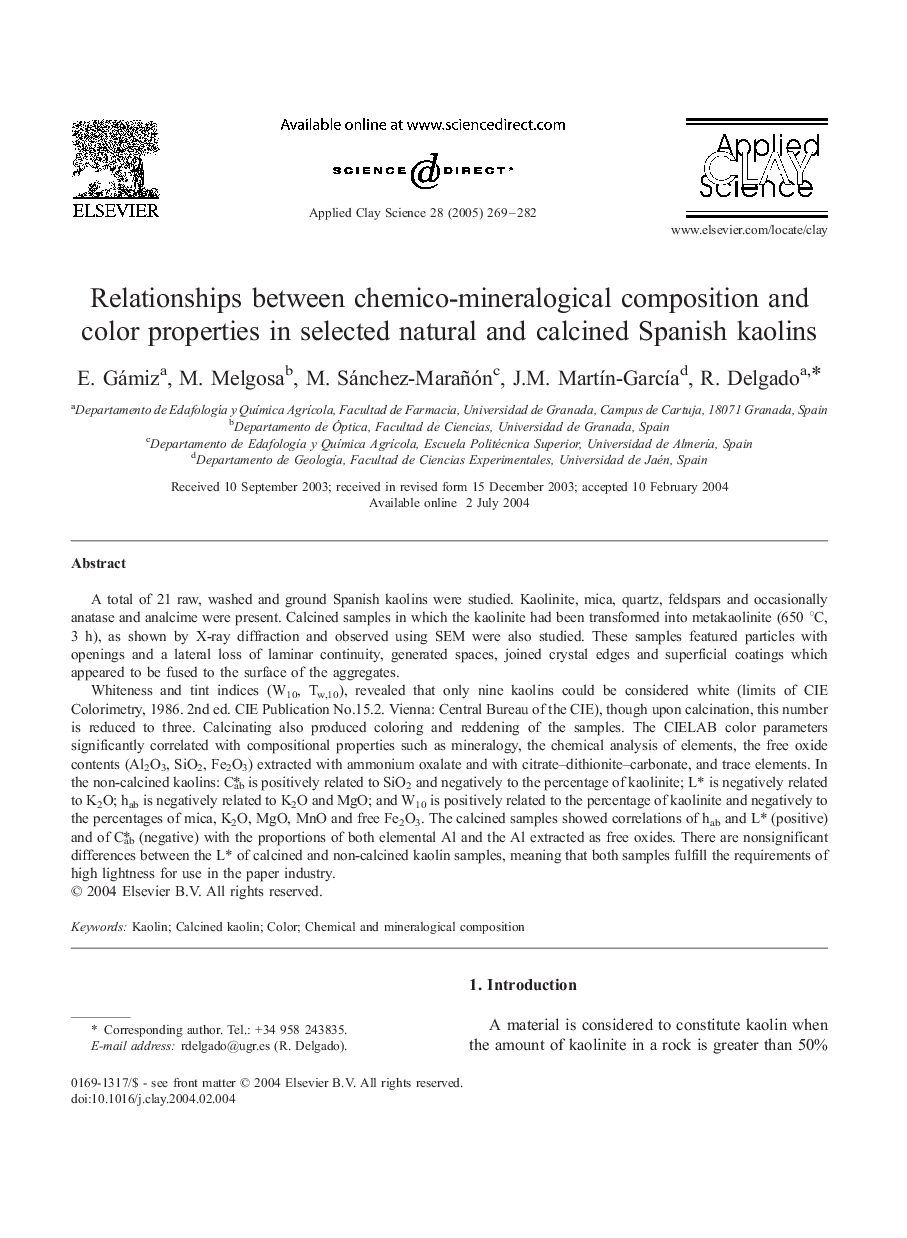| Article ID | Journal | Published Year | Pages | File Type |
|---|---|---|---|---|
| 9822555 | Applied Clay Science | 2005 | 14 Pages |
Abstract
Whiteness and tint indices (W10, Tw,10), revealed that only nine kaolins could be considered white (limits of CIE Colorimetry, 1986. 2nd ed. CIE Publication No.15.2. Vienna: Central Bureau of the CIE), though upon calcination, this number is reduced to three. Calcinating also produced coloring and reddening of the samples. The CIELAB color parameters significantly correlated with compositional properties such as mineralogy, the chemical analysis of elements, the free oxide contents (Al2O3, SiO2, Fe2O3) extracted with ammonium oxalate and with citrate-dithionite-carbonate, and trace elements. In the non-calcined kaolins: Cab* is positively related to SiO2 and negatively to the percentage of kaolinite; L* is negatively related to K2O; hab is negatively related to K2O and MgO; and W10 is positively related to the percentage of kaolinite and negatively to the percentages of mica, K2O, MgO, MnO and free Fe2O3. The calcined samples showed correlations of hab and L* (positive) and of Cab* (negative) with the proportions of both elemental Al and the Al extracted as free oxides. There are nonsignificant differences between the L* of calcined and non-calcined kaolin samples, meaning that both samples fulfill the requirements of high lightness for use in the paper industry.
Keywords
Related Topics
Physical Sciences and Engineering
Earth and Planetary Sciences
Geochemistry and Petrology
Authors
E. Gámiz, M. Melgosa, M. Sánchez-Marañón, J.M. MartÃn-GarcÃa, R. Delgado,
